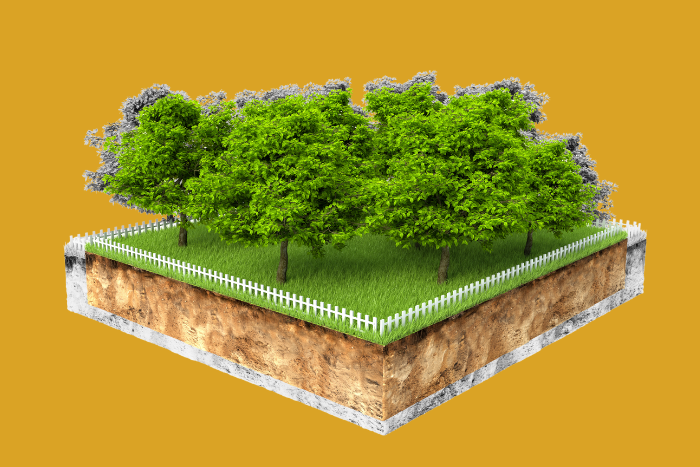Globally, soaring land prices, land grabs, and carbon schemes are creating an unprecedented ‘land squeeze’ by governments and private players with India at the forefront of land loss due to rising urbanisation and mega-infrastructure developments, says the new report
A new report on rising land squeezes—increasing competition over land resources— found that in India the top 10% own 45% of farmland in the country and four farmers every day take their lives in the country due to the strain that a land squeeze causes.
The report by the International Panel of Experts on Sustainable Food Systems (IPES-Food) said that in Asia, India is a hotspot for land degradation, with more than 70% of its arable land undergoing one or more forms of land degradation. India is at the forefront of land loss due to rising urbanisation and mega-infrastructure developments, with 2.3 million hectares estimated to have been lost to urban growth between 1955-2000, and steady ongoing losses to this day.
Globally, soaring land prices, land grabs, and carbon schemes are creating an unprecedented ‘land squeeze’, threatening farmers and food production. The report found that land around twice the size of Germany has been snatched up in transnational deals worldwide since 2000, with 87% of land grabs occurring in regions of high biodiversity.
The report identified trends that are driving the land squeeze and exacerbating land inequality around the world. Failed policy reforms, skewed economic incentives, powerful interests, and misguided assumptions are some of the factors enabling the land squeeze.
The study exposed the alarming escalation of land grabbing in various forms, including through ‘green grabs’, opaque financial instruments and speculation, rapid resource extraction, and intensive export crop production.
Land grabbing and green grabs
The report found that governments around the world are facing renewed calls to deregulate their land markets and adopt pro-investor policies. In Africa and Asia, for example, large swathes of land are being appropriated through ‘special economic zones’ and ‘growth corridors’, in the context of expanding bilateral trade and investment agreements, including South-South deals.
The report also found that powerful actors are flooding into increasingly financialised land markets. Agricultural investment funds rose ten-fold from 2005 to 2018. Meanwhile, agricultural commodity traders are speculating on farmland through their own private equity subsidiaries, while new financial derivatives are allowing speculators to accrue land parcels and lease them back to struggling farmers — driving steep and sustained land price inflation.
The report said that green grabs as environmental goals are enshrined in international environmental agreements, interest in land-based conservation, carbon removal and offsetting is rising fast — unleashing a new wave of ‘green grabs’, which now account for around 20% of large-scale land deals.
According to the report, this global trend of land grabs and green grabs is particularly affecting sub-Saharan Africa and Latin America, while land inequality is growing fastest in Central-Eastern Europe, North and Latin America, and South Asia. It’s been estimated that 70% of the world’s farmland is now controlled by just 1% of the world’s largest farms.
Governments and large corporations are appropriating huge swathes of land through top-down conservation schemes that exclude local land users and small-scale food producers including carbon and biodiversity offsets, the analysis added. Under the guise of ‘nature-based solutions’, business-as-usual investments and top-down conservation schemes are being advanced – raising concerns that powerful actors will use new global biodiversity goals (the ‘30 by 30 target’) to push through massive green grabs.
Encroachment and altering food systems
According to the report, huge areas of land are also being taken out of agriculture — often coercively — and repurposed for extractive industries and mega-developments, in a context of rapid and often unsustainable economic expansion. In particular, a global mining boom, driven by rising demand for critical minerals, is ramping up the pressures on farmland.
Rampant agri-food sector consolidation, the ongoing spread of industrial agriculture, and concomitant diet shifts are rapidly degrading land and eroding farmers’ and communities’ control over their land and how it is used. The integration of smallholders into corporate value chains (e.g., through contract farming schemes) is allowing agri-food companies to gain effective control over farmland and impose production choices and conditions.
“We’re seeing soaring land prices, land grabs and out-of-control carbon schemes driving an unprecedented ‘land squeeze’. In this era of economic turmoil, huge swathes of land are being snapped up like there’s no tomorrow by governments, corporations, and speculators. Land prices have doubled globally since 2008. Farmers, peasants, and Indigenous communities are being squeezed from all sides — losing their land, livelihoods, ancestral and cultural roots, and undermining their ability to produce food sustainably. They need to have real agency to shape land governance,” said Shalmali Guttal, IPES-Food expert, India.
The way forward
The report recommended that building integrated land, environmental, and food systems governance would help halt green grabs and ensure a just and human rights-based transition. The report also said that getting speculative capital out of land markets and getting land into the hands of farmers by forging a new social contract, and a new generation of land and agrarian reforms would be helpful.
About The Author
You may also like
22 July goes down as the world’s hottest day on record
India’s Budget 2024-25 focuses on capacity building to fight climate change, but lacks details
Study finds that extreme weather events do not draw political attention
Tropical forest biodiversity at high risk from climate change due to temperature change under canopies: Study
India’s EV revolution: Are e-rickshaws leading the charge or stalling it?


